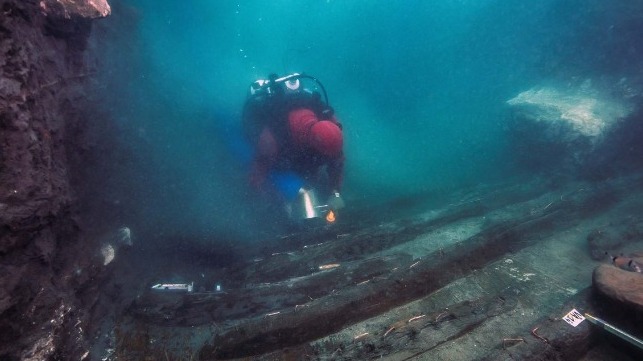Archaeologists Uncover Rare "Fast Galley" From 2nd Century BCE

Marine archaeologists have uncovered the wreck of an ancient Egyptian "fast galley," a rarely-found vessel class from the Ptolemaic period.
This particular wreck is significant for its location at the lost city of Heraklion, once Egypt's largest and most prosperous seaport. Like many ports, it faced stiff competition for shipowners' business, and it eventually lost ground to nearby Alexandria. The city disappeared into the sea between the first century B.C. and the eigth century AD, likely destroyed by earthquakes and then flooded due to land subsidence. The city's underwater ruins were spotted by an airplane pilot in 1933, and an archaelogical team began studying the site 66 years later. So far, they've examined about five percent of the total, indicating the probability of more finds to come.
According to the European Institite for Underwater Archaeology, the craft was likely "hit by huge blocks from the famed temple of Amun, which was totally destroyed [in] a cataclysmic event in the second century B.C."
The 80-foot galley was built for speed with a narrow, shallow hull, and likely served as a warship. With a length to breadth ratio of 6-to-1 - approaching the length to breadth ratio of a modern Arleigh Burke-class destroyer - it would have been relatively fast on the water. Vessels of this kind were wind- and human-powered, with a tall mast and banks of oarsmen for propulsion.

that matters most
Get the latest maritime news delivered to your inbox daily.
The wreck rested about 15 feet below stone rubble and mud fsor two millenia before a team of archaeologists discovered it with a sub-bottom profiler. Time and sea life could have taken their toll on the structure, but the clay helped ensure its preservation.
According to the team, the ship mixes construction methods used by Egyptian and Greek shipbuilders - like Greek mortise-and-tenon joints. Its shallow draft indicates that it was built for operations in the littorals of the Nile River and its delta.
